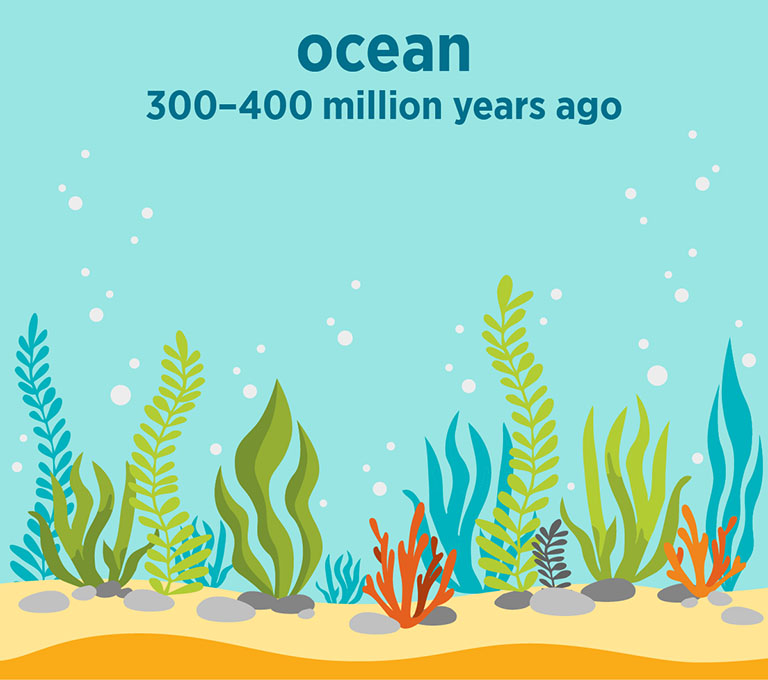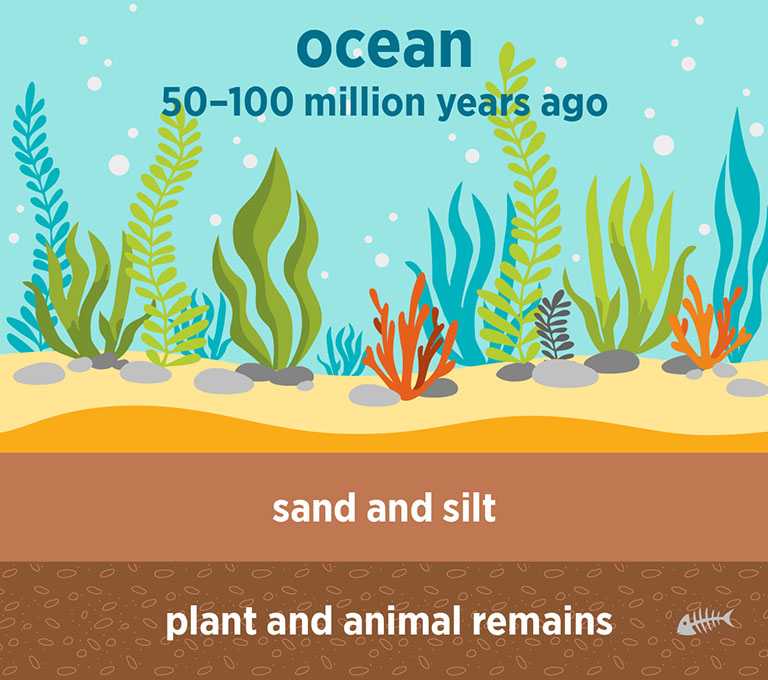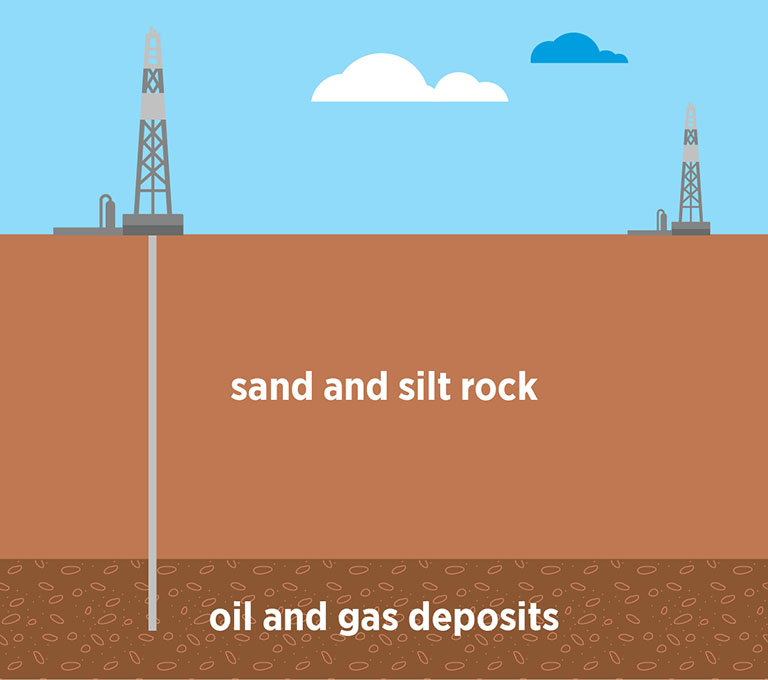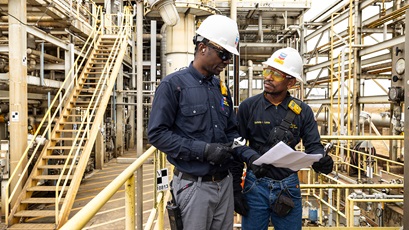our operations
explainer: where do oil and gas come from?
3 min read | december 30, 2024
Oil and gas exploration involves finding the elements that indicate a field will be productive.
Oil and gas are fossil fuels used for nearly every aspect of modern life. They’re formed from prehistoric plants and other organisms that died millions of years ago, via a process that involves heat, pressure and time.
how oil and gas are formed
Many existing oil and gas fields were formed during the Mesozoic Era, between 252 and 66 million years ago. This era is also called the “Age of Dinosaurs,” but it’s a common misconception that fossil fuels were formed from their remains.
In fact, these fuels are derived from algae, plankton, bacteria and plants. These organisms lived both on land and in lakes and oceans.
When they died, they either sank to the lake and ocean floors or ended up there after being carried to the lake or ocean by a river. After sinking to the lake bottom or seabed, they were often buried by layers of sediment. Over time, this organic material and sediment were compacted and became what’s known as source rocks.
Source rocks are sedimentary rocks—often shale or mudstone. They contain enough organic material that, when subjected to heat and pressure over millions of years, they can generate hydrocarbons.
Hydrocarbons are natural chemical compounds made up of hydrogen and carbon. Oil and gas are two types of hydrocarbons. The type of fuel generated by the source rock depends on the kind of organic matter it contains, as well as how much heat and pressure were involved in the rock’s burial history.



Oil and gas are derived from prehistoric plant and animal remains that sunk to the bottom of lakes and oceans hundreds of millions of years ago.
deep history
The use of crude oil in energy dates to 2000 B.C., when the Chinese began refining it for use in lighting and heating.
The modern oil era began in the 1850s, when a group of investors formed the Pennsylvania Rock Oil Company in search of a kerosene replacement. The first drilled oil well was completed near Titusville, Pennsylvania, in 1859. By the 1890s, there was mass demand for oil, driven by the rise in the use of automobiles and other gas-powered vehicles.
Natural gas has a rich history as well. The Chinese used it in 500 B.C. to boil seawater to make it drinkable.
In the 19th century, it was used primarily for lighting until other uses—such as heating homes and cooking food—were discovered.

layers of potential
In the U.S., oil- and gas-rich areas include the Permian Basin, which spans parts of West Texas and southeast New Mexico.
The Permian Basin got its name because it has one of the world’s thickest deposits of rocks formed during the Permian geologic period, between 299 and 251 million years ago. During that time, all continents were combined in a single land mass, and the Permian Basin was underwater.
The geology of the Permian Basin is unique because it contains multiple stacked plays. A stacked play is where a single well can be used to produce oil and natural gas from several layers of rock in different geological zones. That multiplies the basin’s natural resource potential.
Chevron’s other hydrocarbon-rich areas of operation can be found all over the world. Examples include the DJ Basin, where Chevron has operations in Colorado, and the U.S. Gulf of Mexico.

Source rocks, reservoir rocks, seal rocks and traps are among the elements geologists are looking for when exploring for oil and gas.
finding oil and gas
For geologists searching for the next promising oil and gas field to develop, source rocks are a key indicator.
Geologists find source rocks by gathering samples in the field or by collecting rock fragments—typically called cuttings—that are brought to the surface during the drilling process. Those samples are then analyzed.
“We have laboratory analytical techniques to determine the total organic carbon content in the rock because a source rock must meet a certain organic richness level,” said Fang Lin, Chevron Technical Center’s chapter manager of hydrocarbon charge and geochemistry.
The importance of exploring for oil and gas is not lost on Lin.
“I really appreciate the pivotal role it plays in supporting the development and prosperity of human society,” she said. “Many lives are dependent on the energy industry.”
topics covered
related content
-

 decommissioned platform transforms into reef
decommissioned platform transforms into reefour operationsmarch 19, 2025
-

 chevron uses AI to bring reliable energy to data centers
chevron uses AI to bring reliable energy to data centersour operationsmarch 14, 2025
-

 US companies make bold move to power nation’s data centers
US companies make bold move to power nation’s data centersour operationsfebruary 13, 2025
-

 gas development opportunities in sub-saharan Africa
gas development opportunities in sub-saharan Africaour operationsdecember 20, 2024
chevron email updates
Subscribe to our newsletter to receive news and updates.



